“3+1+2”! Eight provinces issued the college entrance examination reform plan. Candidates must choose one of physical history.
The third batch of reform provinces released the college entrance examination reform plan, which was implemented by the students who entered senior one last fall.
CCTV News:Yesterday, the third batch of eight provinces in China started the comprehensive reform of college entrance examination — — Hebei, Liaoning, Jiangsu, Fujian, Hubei, Hunan, Guangdong and Chongqing have issued implementation plans, which will be implemented from the first-year high school students who entered school in the fall of 2018. What are the highlights of the plans announced by the eight provinces and cities this time? Let’s take a look.
All eight provinces and cities were adjusted to "3+1+2" mode.
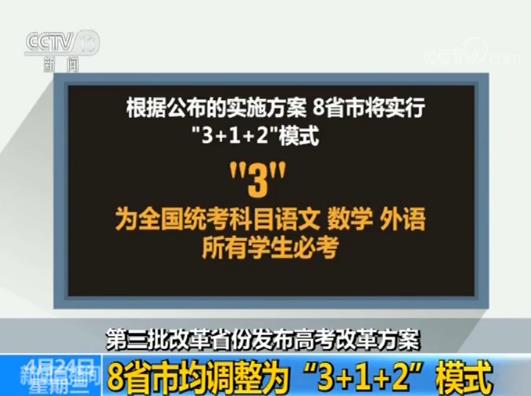
According to the announced implementation plan, eight provinces and cities will implement the "3+1+2" model. That is, "3" is the national unified examination subject Chinese, mathematics and foreign languages, which all students must take; "1" is the preferred subject, and candidates must choose one of the physics and history subjects in the high school level examination; "2" is a re-selected subject, and candidates can choose two of the four subjects of chemistry, biology, ideology and politics and geography.
The full score of each selected subject is 100 points.
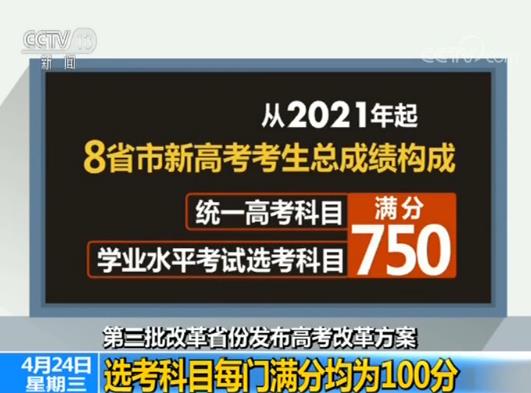
From 2021, the total scores of new college entrance examination candidates in 8 provinces and cities are composed of unified college entrance examination subjects and academic level examination subjects, with a perfect score of 750 points. Among them, the original scores of unified college entrance examination subjects such as Chinese, mathematics and foreign language use are included in the total score of candidates, with a perfect score of 150 points for each subject. In the selected subjects, the original scores of physics or history are included in the total scores of candidates, with a perfect score of 100 points for each subject; The two subjects independently selected by candidates in ideological politics, geography, chemistry and biology will be included in the total score of candidates after being graded, with a perfect score of 100 points for each subject.
How to assign points to selected subjects?
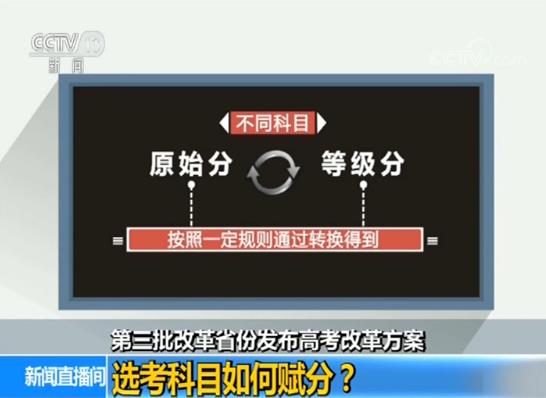
For example, candidate A chose ideological and political education and candidate B chose chemistry, both of which scored 80 points. Candidate A ranked 100th among all the ideological and political education candidates, and candidate B ranked 1000th among all the chemistry candidates. It is neither scientific nor fair to simply add up their scores in all subjects and count them in the college entrance examination. Therefore, it is necessary to convert the original scores of different subjects into grade scores according to certain rules. After the conversion, the queuing order of candidates’ selected subjects remains unchanged, which also solves the problem that the original scores of selected subjects are not comparable.
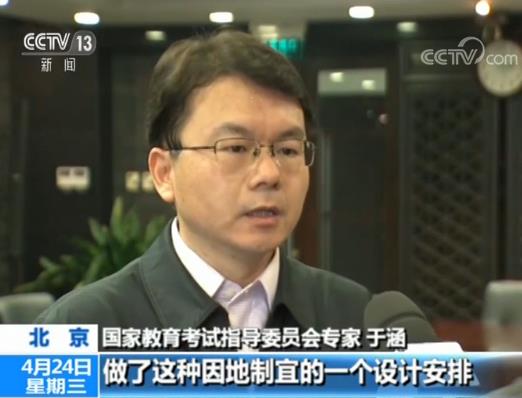
Yu Han, an expert of the National Education Examination Steering CommitteeThis time, it should be said that the allocation scheme of eight provinces has made such a design arrangement according to local conditions on the basis of the previous pilot. The scoring scheme of each province is designed according to local conditions by combining the distribution of candidates, teaching situation and actual examination situation in this province.
English test time and frequency have been adjusted.
In addition, eight provinces and cities have also adjusted the time and frequency of foreign language examinations accordingly. Six provinces and cities, including Hebei, Liaoning, Fujian, Hubei, Hunan and Chongqing, only organize one foreign language listening and written examination in June, and then implement the foreign language examination twice a year when conditions are ripe. Jiangsu Province and Guangdong Province organized a written foreign language test in June, while the foreign language listening and speaking test will be put on weekdays and implemented by computer.
Why do you choose physics and history as your preferred subjects?
From the "3+1+2" model published by eight provinces and cities, the preferred subjects require that candidates must choose one of the physics and history subjects in the high school level examination, so why should physics and history be the preferred subjects?
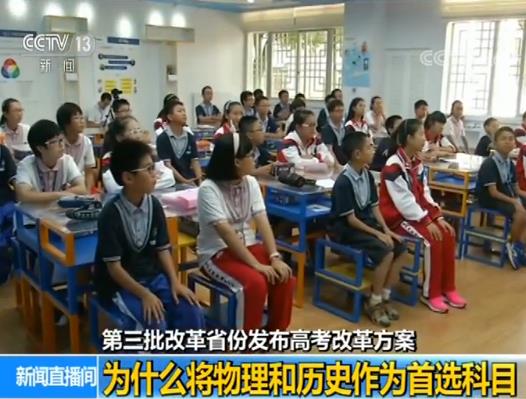
Experts believe that in the training of talents in colleges and universities, physics is the basic subject of natural science majors, and history is the basic subject of humanities and social sciences majors. Studying physics or history subjects in high school is an important foundation for studying natural science majors, humanities and social sciences majors and related interdisciplinary majors in university. Therefore, taking these two subjects as the first choice is conducive to the cultivation of students in related majors in colleges and universities.
Yu Han, an expert of the National Education Examination Steering CommitteeOn the basis of giving students sufficient academic choices, we also take into account the selection of subjects in colleges and universities and the selection of materials in the country. According to our statistics, colleges and universities now have more than 40% enrollment majors and enrollment places, which requires students to take physics courses. After this 3+1+2 adjustment, the number of students taking physics courses can be effectively guaranteed to meet the basic needs of colleges and universities, and of course, it can also meet the basic needs of cultivating future talents in our country, and also avoid the emergence of such problems as unbalanced physics courses.
Volunteer reporting adopts the mode of "major (category)+college"
The reporter found out that eight provinces and cities have made it clear in their implementation plans that colleges and universities will compile their enrollment plans in two categories: physics and history. At the time of admission, candidates who choose physics and candidates who choose history will also queue up for admission in two sequences. Candidates in Hebei, Liaoning, Chongqing and other provinces and cities take the mode of "major (category)+college", that is, one college and one enrollment major (category) is a volunteer, and the admission mode of parallel volunteer is implemented.
Fan Shaobin, Vice President of Guangdong Education Examinations InstituteTherefore, from this piece, the satisfaction of candidates’ volunteers should be higher in the future. The other is conducive to breaking the status quo of fractional theory. That is, we may have several professional groups in a school in the future. In the future, different professional groups should have different scores.
Guide the reform of high school education mode
The examination enrollment system is a national basic education system, and the comprehensive reform of college entrance examination is a major reform in the field of education, which will inevitably have a far-reaching impact on the current high school education and even the whole education. What changes will there be in the future?
Clearly carry out the teaching of selecting courses and leaving classes
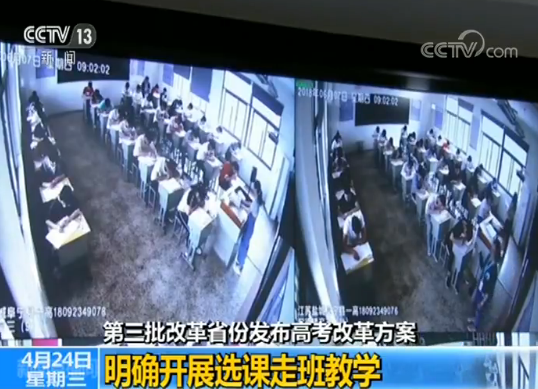
In the reform plan of college entrance examination announced by eight provinces and cities, it is found that there are clear arrangements for how to carry out the teaching of selecting courses and taking classes. For example, schools should not occupy the hours of other non-selected subjects in order to increase the hours of selecting subjects; Explore the requirements of school teaching management system that is suitable for the teaching of selecting courses and moving classes.
Zhong Binglin, President of China Education Association.The comprehensive reform plan of college entrance examination in eight provinces and cities embodies a characteristic, that is to say, it continues to maintain the basic value orientation of college entrance examination reform, such as guiding students’ all-round development, respecting students’ choices, scientifically selecting talents and promoting educational fairness, including students’ course selection and comprehensive quality evaluation, which reflects the development of respecting students’ personalities and interests and giving them more choices.

At the same time, experts also pointed out that the distribution of educational resources in China is uneven, and the eight provinces that implement the new plan also need to study and introduce relevant supporting measures.
Zhong Binglin, President of China Education Association.For example, in strengthening the overall planning at the provincial level, all government departments should have a coordinated mechanism, especially to increase investment in high school education, solve the problem of large class size and structural shortage of teachers in high schools, and ensure the full allocation of educational resources in this respect. In addition, it is necessary to strengthen the linkage between teaching and examination, and realize the unification of the new college entrance examination, new curriculum standards and new textbooks in combination with the actual situation in various places. At the same time, I think we should pay attention to promoting the convergence between middle and high schools, that is, colleges and high schools, higher education and basic education, and strengthen cooperation, including strengthening the linkage between enrollment and training, and jointly exploring how the comprehensive quality evaluation results can be applied scientifically and effectively.